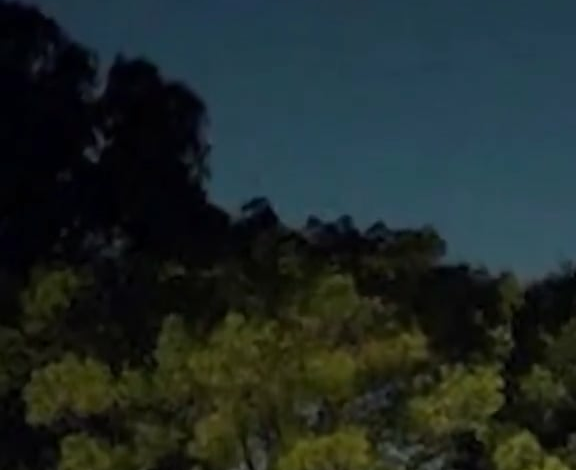Former Fighter Pilot Reveals Nocturnal UFO Encounter at British Nuclear Base After 45 Years Legendary Pilot Comes Forward About Triangular…
Read More »Time
Rewrite this headline to make it engaging, natural, and SEO-friendly while aligning with the main theme of the content. Use keywords from the content contextually, such as ‘UFO,’ ‘UAP,’ or ‘alien encounters,’ to create a compelling and authentic tone. Avoid forcing unrelated keywords like ‘paranormal’ or ‘mysterious sightings’ unless they fit naturally with the content. The title should resonate with the topic and encourage clicks. Here’s the original headline:A Top gun fighter Pilot breaks his Silence about a UFO incident of a 50ft Triangular craft after 45 years – The incident was said to be connected with “Britain’s Roswell” UFO incident, also known as Rendlesham Forest UFO incident..
A Top gun fighter Pilot breaks his Silence about a UFO incident of a 50ft Triangular craft after 45 years
The incident was said to be connected with "Britain's Roswell" UFO incident, also known as Rendlesham Forest UFO incident
https://x.com/Truthpolex/status/1989622330734297285
Top fighter pilot breaks 45-year silence to reveal bombshell UFO encounter with '50ft triangular craft' at nuclear base
A former Top Gun pilot has come forward as a new witness linked to a 1980 UFO incident dubbed 'the British Roswell'.
Decorated US fighter pilot Dan Isbell, 69, broke a 45-year silence to reveal his encounter with a 50ft triangular craft surrounded by multicolored 'plasma' light near a nuclear base he was stationed at in England on December 26, 1980.
The incident is significant as it occurred on the same day that US Air Force personnel at another English nuclear base, RAF Woodbridge, in Suffolk, saw a similar craft descending into neighboring Rendlesham Forest – then got so close they could touch the metallic object.
The Rendlesham UFO incident was captured on audio tape by a senior officer, written up in reports released three years later, and became the UK's most famous out-of-this-world encounter.
Isbell's sighting adds to the theory by UFO researchers that the strange objects were targeting military bases housing nuclear weapons, a pattern which has been highlighted in reports by the Department of Defense's UFO-monitoring office.
That night in 1980, Isbell was a 24-year-old first lieutenant working Christmas shifts as a pilot of nuclear-capable fighter jets at RAF Upper Heyford in Oxfordshire, while his superiors with families took time off.
In an interview with the Daily Mail, he said that around 10pm on December 26, he was driving his imported red Corvette along a country road between the airbase and the US servicemen's accommodation when he saw something he couldn't explain.
'In my rear view mirror I saw some unusual multicolored lights traveling very rapidly, just over the trees to the side of the road,' he said. 'As it zipped past me, it just stopped instantaneously.'
A Top gun fighter Pilot breaks his Silence about a UFO incident of a 50ft Triangular craft after 45 years
The incident was said to be connected with "Britain's Roswell" UFO incident, also known as Rendlesham Forest UFO incident
https://x.com/Truthpolex/status/1989622330734297285
Top fighter pilot breaks 45-year silence to reveal bombshell UFO encounter with '50ft triangular craft' at nuclear base
A former Top Gun pilot has come forward as a new witness linked to a 1980 UFO incident dubbed 'the British Roswell'.
Decorated US fighter pilot Dan Isbell, 69, broke a 45-year silence to reveal his encounter with a 50ft triangular craft surrounded by multicolored 'plasma' light near a nuclear base he was stationed at in England on December 26, 1980.
The incident is significant as it occurred on the same day that US Air Force personnel at another English nuclear base, RAF Woodbridge, in Suffolk, saw a similar craft descending into neighboring Rendlesham Forest – then got so close they could touch the metallic object.
The Rendlesham UFO incident was captured on audio tape by a senior officer, written up in reports released three years later, and became the UK's most famous out-of-this-world encounter.
Isbell's sighting adds to the theory by UFO researchers that the strange objects were targeting military bases housing nuclear weapons, a pattern which has been highlighted in reports by the Department of Defense's UFO-monitoring office.
That night in 1980, Isbell was a 24-year-old first lieutenant working Christmas shifts as a pilot of nuclear-capable fighter jets at RAF Upper Heyford in Oxfordshire, while his superiors with families took time off.
In an interview with the Daily Mail, he said that around 10pm on December 26, he was driving his imported red Corvette along a country road between the airbase and the US servicemen's accommodation when he saw something he couldn't explain.
'In my rear view mirror I saw some unusual multicolored lights traveling very rapidly, just over the trees to the side of the road,' he said. 'As it zipped past me, it just stopped instantaneously.'
Uncovering My Family’s Hidden Connection to UFO Sightings and UAP Encounters A Personal Encounter That Changed My Perspective Growing up,…
Read More »The Intriguing Connection Between DNA, Evolution, and UFO Sightings Near Nuclear Facilities As we explore the complex interplay between genetics…
Read More »Shocking New Theory from Experts: Are UFOs Defying the Laws of Physics with an Anti-Gravity Machine? A groundbreaking theory proposed…
Read More »Title: Rallying for UAP Transparency: Time to Make Your Voice Heard In a world filled with catchy phrases and memorable…
Read More »Empowering Enthusiasts: Taking Research into Our Own Hands In today’s fast-paced world, waiting for government transparency can feel like an…
Read More »In recent discussions swirling around the James Webb Space Telescope (JWST), there’s been a noticeable void of solid public information,…
Read More »Title: Unveiling the Unseen: Graeme Rendall to Shed Light on 70 Years of UAP Mysteries Are you ready to uncover…
Read More »UFC Legend Georges St-Pierre Sparks Curiosity About UFOs in Latest Tweet MMA fans and followers got a surprise shift in…
Read More »H.R. McMaster Discusses UAPs on Real Time with Bill Maher: Insightful Commentary from Former National Security Advisor for President Trump…
Read More »








